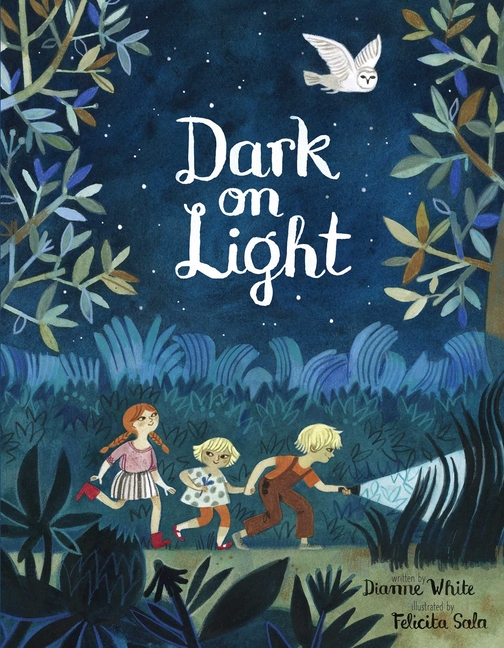From Teaching to Writing

TeachingBooks asks each author or illustrator to reflect on their journey from teaching to writing. Enjoy the following from Dianne White.
It was teaching that led me to explore the idea of writing books for kids. I hadn’t grown up thinking of myself as a writer. My younger sister was the one with the vivid imagination and no end of stories to tell. She was the “official” writer in our family. I was shy and quiet, more grounded in the real world than the world of my imagination. I didn’t think I had stories to tell.
It wasn’t until I was much older that I realized we all have stories, and the seeds for these are found in the ordinary, everyday things of life. Over time, these seeds began to grow – from the things I did and saw, the people I met, and the experiences I had.
Mrs. Clark was one of the first teachers I remember who spoke poetry into my heart and mind.
Poetry was in her bones. She used to stand behind each of our desks reciting some of her favorite poems, including “Sea-Fever” by John Masefield:
“I must go down to the seas again, to the lonely sea and the sky,
And all I ask is a tall ship and a star to steer her by…”
Even as I type the words, I can see that classroom – which, long before, had been a room in the house of a local sea captain – and almost hear the lapping of water on the Long Island Sound that was minutes from our school.
Another teacher, Mr. Duncan, encouraged us to write poems. Even though mine were terrible – about skunks in bunks and blue sticky glue – Mr. Duncan planted a seed that helped me believe that anyone could write a poem.
Years later, when I was the classroom teacher sharing picture books, novels, and poetry with students, I got to witness once again the power of words to touch hearts and minds. Even so, I wondered. Did I have stories to tell? And how could I help kids find their voices if I hadn’t found mine?
That was when another teacher – a professor, actually – gave me the gift of complimenting my writing. There was nothing creative about my work. She was referring to the essays I’d been writing in preparation for my master’s degree’s comprehensive exams. Still, her compliment did something inside me, instantly changing a story I’d been telling myself for years.
In her poem, “Valentine for Ernest Mann” Naomi Shihab Nye writes:
“… poems hide. In the bottom of our shoes,
they are sleeping. They are the shadows
drifting across our ceiling the moment
before we wake up. What we have to do
is live in a way that lets us find them…”
Stories, like poems, hide. In ordinary, everything things. We only need to pay attention, our eyes and ears open to the world.
In other words, the practice of capturing our stories on the page is for everyone, everywhere. Our job as teachers is simply to plant the seeds of encouragement and point kids to the glimmers that reside in and around and woven through their day-to-day lives.
But shouldn’t writing be harder?
I don’t think it needs to be.
I remember one day, as I picked up my third graders after the morning bell, a child pointed to a praying mantis outside the classroom door. Immediately, our writing for the day took a turn.
Two kids scurried off to collect a soft cushion of grass and we carefully guided the praying mantis into its temporary home. As we sat in a circle at the front of the classroom, the jar made its way around the group. The kids took time to pause, notice, and pay attention to the details of the living creature before them. It was a shared moment of awe and wonder.
Eventually, we were ready to write. That day, it was a group poem. But just as easily, the writing could have moved in any number of directions. It’s the process and practice of doing the writing, along with a healthy dose of encouragement, which helps us find the stories we want to tell.
As I write this, I’m nearing the end of a poetry class for adults with teacher-poets Georgia Heard and Rebecca Kai Dotlich. I appreciate the gentle way they hold the words my classmates and I write and leave us feeling both inspired by concrete examples of ways to improve the work and encouraged to know that our words matter.
I’m a writer and a teacher of writing today because of passionate teachers who took the time to plant seeds of poetry and story, and who nourished those words with just the right amount of process, practice, and encouragement, in equal measure.
Once kids (or adults) catch onto the idea that stories are there, right there – in the comings and goings of their lives – it’s easier to begin. Sure, there are rules and best practices, skills to learn and develop, but in those early attempts at finding stories and our voices, retelling and writing down the things we see and hear is a wonderful way to start. It’s enough to take one first step.
Begin.
Somewhere. Anywhere.
I hope you’ll join me as we continue to live in ways that help us find the stories and poems of our lives.
Books and Resources

TeachingBooks personalizes connections to books and authors. Enjoy the following on Dianne White and the books she’s created.
Listen to Dianne White talking with TeachingBooks about the backstory for writing Dark on Light. You can click the player below or experience the recording on TeachingBooks, where you can read along as you listen, and also translate the text to another language.
- Explore the Activity Kit for Dark on Light
- Discover Dianne White’s page and books on TeachingBooks
- Visit Dianne White on her website, Twitter, Instagram, Facebook, Pinterest, and GoodReads.
Explore all of the For Teachers, By Teachers blog posts.
Special thanks to Dianne White, Simon & Schuster, and Blue Slip Media for their support of this post. All text and images are courtesy of Dianne White and Simon & Schuster, and may not be used without expressed written consent.



Leave a Reply